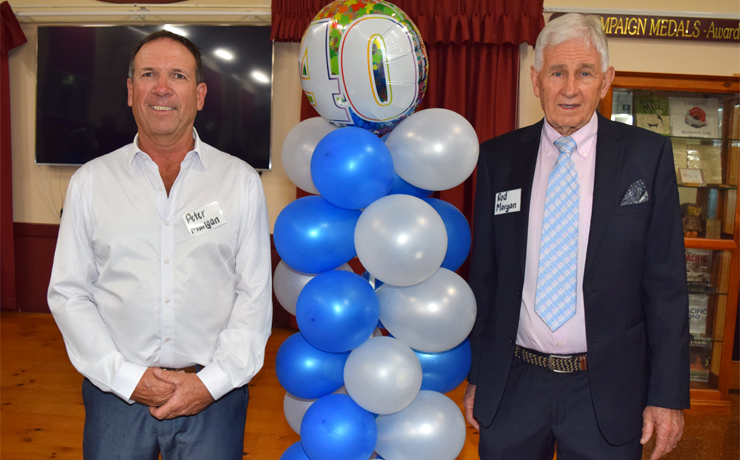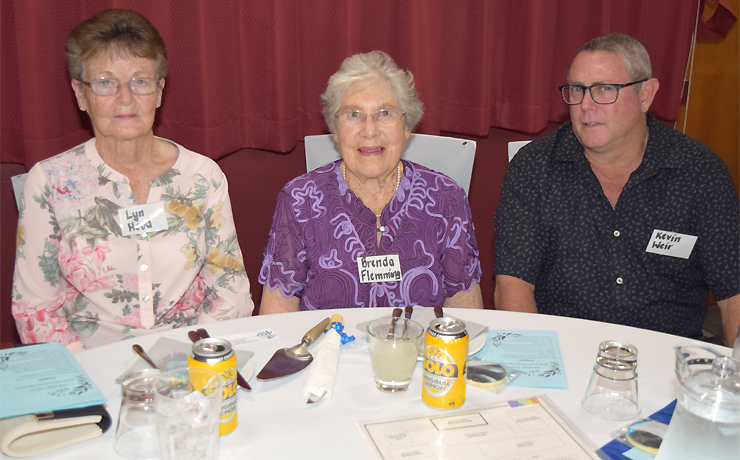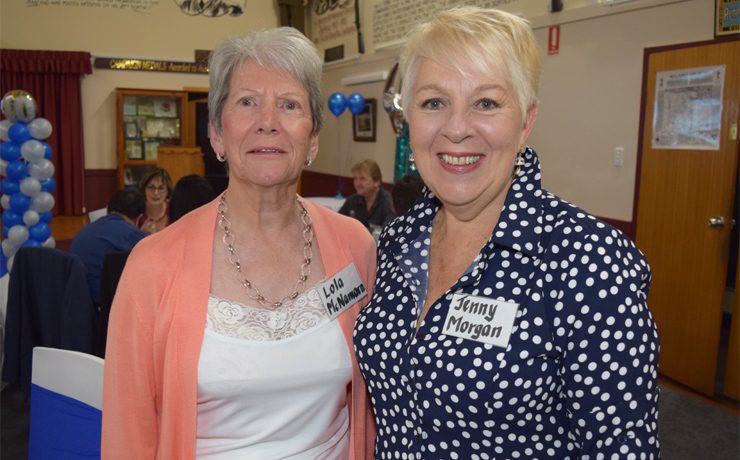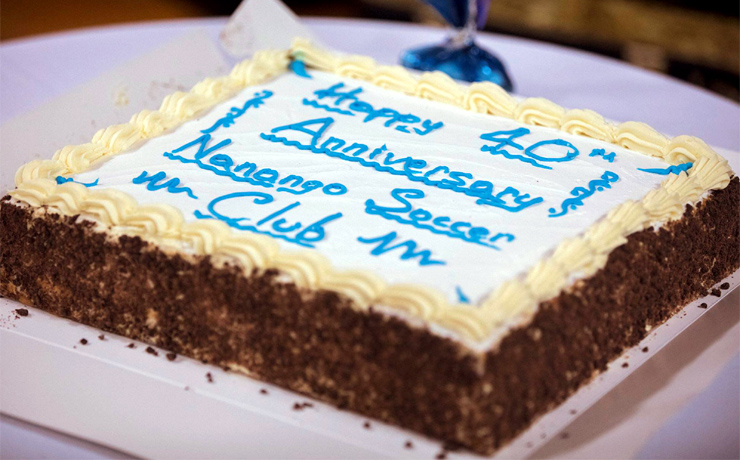
October 29, 2021
Current and former players, sponsors, supporters and friends packed Taras Hall recently to celebrate the 40th birthday of Nanango’s soccer club.
The birthday party had originally been planned for March last year but the sudden arrival of the COVID pandemic forced organisers to postpone the event just a few days before it was scheduled.
Eighteen months later, looser restrictions on public gatherings made the 40th birthday party feasible again, and the evening was sold out within weeks of a new date being announced.
The night was compered by long-time club members Peter Mangan and Rod Morgan, with Peter acting as Master of Ceremonies and Rod retelling the early history of the club and the many hurdles its early members had to overcome.
Former Nanango Shire Mayor Reg McCallum – who played an important role in securing funding to upgrade the club’s grounds in Burnett Street – was a special guest speaker.
Reg confessed he had “never kicked a soccer ball in his life” but he said he was very proud of the club’s accomplishments and the pre-eminent role the Nanango Panthers players have held in the region’s annual soccer competition for well over a decade.
He also congratulated the club for the significant improvements it had helped bring to Nanango’s sports facilities through the way they had transformed the former Mill Flat wicket into the recently renamed Alan Downie Sports Fields.

* * *
The Nanango Sports Association’s inaugural president Rod Morgan gave an interesting address about the early days of Nanango’s soccer club in the 1980s and the difficulties club members had faced learning the game and then securing a home ground. This is an edited text of his talk:
Nanango was a very different place in the 1970s and 80s.
The first field was at the Butter Factory wicket – those of you who know Nanango well will know where that is – and the first thing we had to do was get the gate open, then shoo the old brown cows out of the field.
The field and amenities were very rustic, with a concrete cricket pitch in the middle of it and an old tin shed where the parents sold hot dogs.
We started with great gusto and no idea of the game. And because this was pre-Internet, we learned to play from a couple of books that our parents bought from Toowoomba.
Our first soccer coach was Andre Festino. And do you know why he was appointed? Because he was a Frenchman and they played soccer in France!
We had trouble understanding what he was saying at any time, and when he got excited about the game he was impossible to understand.
Guess what nationality the second coach was?
Mario was his name. And he was Italian. This is a different language and he was very difficult to understand, too. But listen to this: Mario also wanted us to celebrate our first win with a beer. And this was frowned upon by some of the U12 parents, as you can well imagine.
One of our first ventures into the soccer world was an U12 competition in Toowoomba.
We had mismatched white T-shirts, we were billeted by families and we got flogged 20-to-one – but the team was ecstatic in the celebration of that one goal.
Three years later, we had uniforms and were quite competitive in the same competition, and we’d come a long way in a very short time.
But it wasn’t until Alan Downie taught us structure and tactics about how to actually play the game that we really improved.
We also had the opportunity to play on the current field, and it was increased in size to accommodate more than one field.
With a bigger field came the opportunity to play a women’s team and a senior team, and we grew from there.
I have a vivid memory of racing to the ball against some old guy in the seniors only to see him get there first, dribble past me and whip the ball up field.
Warren Hockey certainly had the skills of someone, even if it was at the ripe old age of 35!
But the team had the joy of playing the world game.
I’ve travelled quite a bit and there are two places which parallel Nanango. One was a mountain village in Timor Leste. And another was a desert community in Northwest Argentina where the kids were just the same as here, playing for the fun of it, parents supporting it, demonstrating that when the world game was born in Nanango, it opened the door to a world of opportunities at the same time.

So I’m just going to finish off with how the field came about, and that’s not going to be a very long story.
Alan Downey came on the soccer scene around 1984. He coached the juniors and he played for the seniors and he was very nifty with his feet. I can assure you he could dance quite well, too.
But there were sporting field problems.
When I came in, cricket was played on the (Nanango) Showgrounds.
But they got kicked off the year that I got there … because the Showgrounds wanted more horse sports.
Soccer was being played at the Showgrounds occasionally, and the rugby league club were helpful, they co-operated with us with a few little carnivals in the early days. And you’ve already heard about the Butter Factory.
So we got together with the cricketers and formed the Nanango Sporting Association, which still continues today and it’s carried on where that original team left off.
I was the inaugural president and I can recall some very hard times in those initial days.
We looked at various fields and the only one that looked promising was where we are now. It was called the Old Mill Wicket because it where the mill was. And it was one of the worst grounds I’ve ever seen in my life.
It had clay soil. It was hot in summer and freezing in winter, it had old box trees all around it, it was on a slope and it was one of the most inhospitable places you’ve ever seen in your life.
So we went to it and it was a hard slog.
We had raffles in all the hotels, we did cabarets, and one thing we also did was to buy and sell a block of land at Tansey. and we actually made a profit on it.
This all produced enough money to clear out a little bit, so we could then try to get a lease from the council.
Now when we went to the Council, two of the most helpful people there were Reg McCallum and Brian Hawthorne. Both of them wanted great progress for the area, and on our behalf they went to the QEGB and Pacific Coal because the power station was in the process of being built, and somehow they cajoled them into committing $130,000 to us.
Now that seems like peanuts to us today, but in those days it was a lot of money and we got a lot of work done for that.
We got the ground beautifully levelled, the old box trees went, and there were a lot of other improvements made as well. There was fencing, there was exploring for water, there was building the clubhouse. And that was how we got going way back in the very early 80s.
But it’s been carried on until today. The grounds continue to increase in their usefulness. And that’s the story of soccer, both senior and junior, in Nanango.
Thank you for coming and thank you for listening.


























